-
When you click on links to various merchants on this site and make a purchase, this can result in this site earning a commission. Affiliate programs and affiliations include, but are not limited to, the eBay Partner Network.
-
Posts
1,013 -
Joined
-
Last visited
Content Type
Profiles
Forums
NGC Journals
Gallery
Events
Store
Downloads
Posts posted by Mr. Smith Guesser
-
-
Really good post Mr. Smith...A++++++++++++++++ (thumbs u
PS I think you helped me figure out the 11 oclock coat of arms on the libertad.....its the type II design
Thanks. Yeah, I just looked at that coat of arms, and I think you're right.
On the older style Libertad though, something I noticed a long time ago, was that it also has some similarities to the American Silver Eagle.
Both feature Liberty on the obverse with her right arm raised and left arm lowered, although this is the way Liberty is generally positioned in depictions (see the Statue of Liberty). And both feature a right-facing eagle with spread wings clutching similar looking objects in their beak...a banner on the ASE and a snake on the MSL. Again, it's not an exact match...but quite similar.
-
This is actually one of my favorite coins in my 20 centavo collection. It's not the actual coin that I like though. The coin is not in good condition. But rather, I like that it has apparently been in this flip since at least 1965.
Apparently it was gifted to a "C.M.C." by a "Clardy" in 1965. And then to a "Robbie Fletcher" in 1978. But I really can't be sure. I don't know any of these people.
-
But the main point of my reply is that I wanted to ask, are you a member of the U.S. Mexican Numismatic Society? They produce a quarterly journal and your write up here would probably be a welcomed article to include. Just a thought.
Not a member. In fact I didn't even know that such an organization existed. I'll definitely check it out though. I mean, really, for the past four years or so, I've been mainly focused on the Roosevelt dime series and just picking up these 20 centavos here and there.
I do have a complete set, but less than half of it has been certified by either NGC or PCGS. Many times that I see them for sale already certified, sellers are asking too much money. There's a 1951 NGC MS 64 RB with an asking price of $195 that's been sitting on eBay forever: http://www.ebay.com/itm/1951-MO-Mexico-20-Centavos-NGC-MS-64-RB-/200682474295?pt=LH_DefaultDomain_0&hash=item2eb99b8b37
$195 is too much IMO for that coin. Granted, however, the seller has put a "make an offer" option on it now. But I personally don't like to play that "make an offer" game. Many eBay sellers will try to play the high/low game just to squeeze a few more bucks out of you. People try to play that game with everything though. No one ever wants to leave any meat on the bone. Nevertheless, I already have a '51 NGC MS 65 RB, so I don't need that coin anyway.
-
In a prior article, the Mexican Coin Company mentioned that Mexican coins were popular among (US) collectors in the past (1950's and 1960's). I believe they mentioned or I understood that at least some Mexican modern series were collected by completing folders (presumably Whitman). If this is correct, I suspect this series was one of them and that a decent number of the better grade coins survive as a result of US collecting.
I believe that I read that somewhere as well. I thought at first it was in the January 1971 issue of Coins Magazine that I referred, but I can't seem to find it there. So it was probably in one of the other books on Mexican coins that I have. Nevertheless, Yates did write in that article that the 20 centavo, "is a rather popular coin numismatically, and is very pleasing in brilliant uncirculated."
I'll look again through my books to see where I read that Mexican coins were popular in the 50s and 60s.
-
- Popular Post
The 1943 through 1974 Mexican 20 centavo, sometimes called the Pyramid Of The Sun (POTS) coin is one of my favorite world coins. Its design is a composition of historic, mythologic, and esoteric elements that work in concert to create one of the most attractive modern coins of the 20th century.
The Mexican 20 centavo denomination was first produced in 1898. This coin was minted with a 90% silver content with actual silver weight of 0.16 ounces. Monetary reforms in the early 20th century, however, began to reduce the precious metal content of all Mexican coins. By WWII, the average silver content in Mexican coins fell by 65%. And in 1943, silver was completely eliminated from the 20 centavo denomination. Which is where the story of the POTS coin begins...
The Pyramid Of The Sun Coin
On August 3, 1943 Mexican President Manuel Ávila Camacho authorized the issuance of the new bronze 20 centavo to be designed by Chief Engraver of the Mexican Mint.
In his book Numismatic History of Mexico from 1823-1950 (1957), Alberto Francisco Pradeau tells us of the POTS coin, “The dies of this coin were made by the engraver of the mint of Mexico, Manuel Luna Negrete, with the help of his assistant, Francisco Rivera Paniagua”¹
¹ Translated from spanish: “Los cuños de esta moneda fueron hechos por el grabador de la ceca de México, Manuel Luna Negrete, con la colaboración de su ayudante, Francisco Rivera Paniagua”
Obverse Design
The obverse of the POTS coin features the Mexican coat of arms: a Golden Eagle perched atop a prickly pear cactus on a stone in the water clutching a snake. This image is based on the legend of the holy city of Tenochtitlan, which goes something like this:
In the beginning, the Mexica people emerged from the womb of the Earth; a place called Chicomoztoc, which means “seven caves”. They settled in a land of paradise called Aztlán. But, the Mexica lived there under a tyrannical ruling class called Azteca Chicomoztoca.After centuries of oppression, Huitzilopochtli, the Mesoamerica god of war, the sun, and human sacrifice appeared to the Mexica's highest priest in a vision. Huitzilopochtli ordered the Mexica people to leave Aztlán saying:
“Where you will find an eagle, sitting on a cactus on a stone in the water, tearing with his beak and fangs a snake asunder, there you shall settle.”
An excerpt from Diego Durán's The History of the Indies of New Spain showing the founding of Tenochtitlan published c. 1581
For the two centuries, the Mexica wandered in the Valley of Mexico, until one day they saw this very sight on a small swampy island in the middle Lake Texcoco. And it was there that the Mexica established the city Tenochtitlan.
Throughout the POTS coin series, the design of the Mexican coat of arms on the obverse would change three times, gradually becoming less detailed and more abstract.
The first obverse (KM# 439) featured a redesign of the Mexican coat of arms, which became the official design approved by President Miguel Alemán Valdés in 1947.
His successor, President Adolfo Ruiz Cortines approved another redesign for the Mexican coat of arms in 1955, which found its way onto the Type II (KM# 440) POTS coin in the middle of the 1955 production year.
The Type III (KM# 441) obverse is a much less detailed version of the Mexican coat of arms. This version of the Mexican coat of arms, sometimes called the “black and white” version, is still used today to seal official documents.
The more abstract and less-detailed Type III obverse (KM# 441) is quite easy to distinguish from the Type I and II designs, having very little relief. But the differences between Type I and II are less easy to see at first.
The eagle in Type II is a bit larger, with its head raised a little higher and much less detail on the feathers than Type I. But the easiest way to distinguish between the designs of Type I and Type II are denticles around the outside perimeter of the coin. The Type I design has denticles. The Type II design does not.
Reverse Design
The reverse of the 1943 to 1974 Mexican 20 centavo is the coin's true highlight. In the January 1971 issue of Coins Magazine, Ralph Yates wrote that the reverse of the POTS coin was, “one of the most attractive scenes to appear on modern coinage in the Western Hemisphere.”
At the center of the reverse stands the Pyramid of the Sun, the largest structure in and central focus of the city of Tenochtitlan, which is inscribed at the pyramid's base.
Atop the Pyramid of the Sun is inscribed the word “LIBERTAD” (Liberty) upon an illuminated Phrygian Cap, a symbol of freedom. The cap divides the denomination “20” in front of rays of sun light from the background, representing enlightenment.
In the foreground, a giant cactus rises from the desert on the left while the leaves of a prickly pear cactus shoot up on the right. Between the cactuses is the word “CENTAVOS” and year of issue. The Mexican Mint's mark (MO) is located immediately above the Pyramid of the Sun.
Flanking the Pyramid of the Sun on both sides are two volcanoes. On the right is Popocatépetl (also called “the Smoking Mountain”), an active volcano. On the left, is the dormant Iztaccihuatl (also called “the White Woman”). These volcanoes are named after the tragic legend of two star-crossed lovers, which goes something like this:
Thousands of years ago, when the Aztec Empire was in its heyday and dominated the Valley of Mexico, it was common practice to impose a mandatory tax neighboring towns. This taxation did not sit well with the indigenous group known as the Tlaxcalteca, who were bitter enemies of the Aztecs. After a while the Tlaxcalteca became weary of the taxation and the chief of the group decided to fight for his people’s freedom.At this time, the Tlaxcalan chief had a daughter named Iztaccihuatl who was said to be the most beautiful of all the princesses. Iztaccíhuatl fell in love with a handsome and great warrior named Popocatépetl. And shortly thereafter, Popocatépetl asked the chief of the Tlaxcalans for permission to marry his daughter. But the Tlaxcalan chief believed that Popocatépetl was unworthy to marry Iztaccíhuatl. Instead of declining the marriage request, however, the chief of the Tlaxcalteca sent Popocatépetl to battle to fight the Aztecs, saying he would approve of the marriage when Popocatépetl returns.
But the chief, not approving of the relationship, sent Popocatépetl to war mostly unprepared so that the chief thought Popocatépetl would die in battle. But Popocatépetl did not die. Popocatépetl survived the battle and quickly headed home to his promised wife Iztaccíhuatl.
But when the Tlaxcalan chief heard that Popocatépetl's success, he lied to Iztaccíhuatl, telling her that Popocatépetl was killed in battle, believing she would quickly marry someone else before Popocatépetl returned. But upon news of Popocatépetl death, Iztaccíhuatl, crushed by such tragedy and overwhelmed by sadness, died of grief without even imagining it could be a lie.
When Popocatépetl returned to find his lover dead, he wandered about the streets for several days and nights, until he decided he had to do something to honor her love and to assure that the princess would not ever be forgotten. So Popocatépetl ordered a great tomb built under the sun, piling up ten hills together to form a huge mountain.
Popocatépetl carried the dead Princess in his arms, took her to the summit and laid her on the great mountain. The young warrior lovingly kissed her cold lips, took a smoking torch and knelt in front of his beloved to watch over her eternal sleep.
From then on, they continue together, facing each other. Eventually the snow covered their bodies, forming two majestic volcanoes that would remain joined till the end of time. The legend goes on to say that when the warrior Popocatépetl remembers his beloved, his heart that preserves the fire of eternal passion shakes and rains fire on Earth in blind rage at the loss of his beloved.
Iztaccihuatl and Prince Popocatepetl by Jesus Helguera
General Market Notes
Mexican coins, in general, aren't the most popular with collectors today. And the few collectors who are interested in Mexico coins seem to be more attracted to the 19th and early 20th century gold and silver denominations like the real, escudo, and peso. This puts the Pyramid of the Sun coin pretty low on the overall desirably scale among the general collectors today.
The Pyramid of the Sun coin was produced in large quantities. Nearly 900 million coins were produced in total throughout the entire POTS coin mintage. With such a high production and little overall desirability, most POTS coins have little numismatic value and will sell for less than $1. Only a few years in the best condition have any significant numismatic value.
There are many POTS coins currently available at coin shops, numismatic shows, and online auctions. The large majority of these, however, have not survived the years in BU condition, particularly some the earlier dates.
Perhaps the hardest date to be found in BU condition, and most valuable, is the 1951. Other early dates that less commonly found still in BU condition include 1943, 1946, and 1952. Later dates of the POTS coin that can be harder to find in BU are 1960, 1968, and 1959. Nevertheless, there are no dates that are impossible to find in BU condition.
Other Interesting Tidbits
Exonumia Use
As previously mentioned, there were a lot of POTS coins minted. As a result, the 20 centavo has been widely used for exonumia.
The most common exonumic application for the Mexican 20 centavos seem to be ashtrays. There are many examples of ashtrays made from the 20 centavo that can easily be found at many antique stores and online auction sites. There are many different styles, but the general designs are basically the same. I personally have three of these, one of which I actually do use as an ashtray.
Other objects that have been made out of the POTS coin include a variety of jewelry, cufflinks, bolo ties, and even guitar picks.
Ah, Ya Me Cayó El Veinte
Years ago, before cell phones and communications giant Telmex, most people in Mexico used payphones.
A caller would dial the number and then speak to the operator. The phone operator would ask the caller to pay for the call. Then, when the operator heard the coin drop they would connect your call.
If the operator didn't hear the clang of the coin drop, they would ask the caller to try again. When the operator heard the coin drop, they would say something close to, “Ah, ya me cayó el veinte” or in English, “Oh, now I heard the twenty drop.”
Over the years, this phrase came to be the English equivalent of “Oh, now I understand,” or “Now I get it.” Today, the Mexican phrase is not as widely used, although some Mexican people from older generations still use the phrase.
Though completely different in meaning, the English term to “drop a dime” on someone (meaning to divulge or expose information about someone behind their back) also stems from the use of payphones, which at one point cost ten cents to use. If one person were to rat-out another, they might literally “drop a dime” into a payphone to make the call.
Similarity to the Great Seal of the United States
I am not sure if this is by design or just a coincidence, but the general design of the POTS coin has striking similarities to the Great Seal of the United States.
As we've seen, the obverse of the POTS coin features an eagle, facing it's right, grasping a snake. Similarly, the obverse of The Great Seal of the U.S. features an eagle, facing it's right, grasping a banner.
The reverse of the 20 centavo features an unfinished pyramid with an illuminated cap floating above it. Meanwhile, the reverse of The Great Seal of the U.S. also features an unfinished pyramid with an illuminated cap floating above it.
Of course, there are many clear differences between the two designs. But overall, I think the similarities between the two are greater than the differences. Compare them for yourself:
Summary
The historic, mythologic, and esoteric design elements of the POTS coin make it one of my personal favorite coins of the 20th century. It is an extremely easy and affordable coin series to collect, aside from just a few dates, and makes for a great beginner collection.
Thanks for reading.
Further Reading
Buttrey, Theodore V., A Guide Book of Mexican Coins, 1822 to Date, Western Publishing Co. Inc., Racine, WI, 1969.
Long, Richard A., The Availability of 20th Century Mexican Coins, Gulf Coast Printing Co., Corpus Christi, TX, 1969.
Pradeau, Alberto F., Numismatic History of Mexico from 1823-1950, 1957.
Utberg, Neil S., The Coins of Mexico, 1536-1963, San Antonio, TX, 1963.
-
How about sponsoring more coin-specific or topic-specific seminars? At the Baltimore show next month, there is only one topic-specific seminar, as far as I can tell, called “Coins in the Bible: A Non-Sectarian Introduction,” with Mike Markowitz. Link to schedule: http://expo.whitman.com/baltimore-spring-expo/schedule/
-
Very cool. Did you already have it examined by someone at CONECA?
-
I'm reviving this thread from last month to announce that NGC will now be recognizing the REV OF 68 for 1969, 1970 and 1970-D dime under its VarietyPlus Service.
When sending in raw coins for grading and variety attribution, just check the VarietyPlus box and write in the Variety field which variety you're looking to have added. For coins already certified by NGC, this variety can be added under VarietyPlus Service without having to get them graded again. The fee is likewise $15.
Very cool. It's a very easy variety to identify. And it seems that in the past few months, there has been an uptick in interest in the variety. It was added to the latest Cherrypickers' Guide and there was a write up in CONECA's ErrorScope about FS-901 in the Mar/Apr issue of 2014.
-
This coin is graded MS67FT by NGC and according to the population data for NGC and PCGS, it is the Top Pop for the FS-801 variety.
Very cool. Yeah, it's hard to see the sides of the split in the lower band from the photo. But very nice coin. I don't think there are any 1970-D dimes graded higher than MS 67 FT even without the variety. I have a few 1970-D FS-801s, but none higher than MS 66. This one is in an ANACS holder at MS 66, but a good example of an early die state FS-801.


This one is close to FT. But no cigar.
-
Yes the 1968 s proof dime has both reverse as well
I contacted Dr. Wiles who said they are a 50/50 occurrence.
I believe the numbers are not 50/50 but I do not know what the percent is
I will work on the pics shortly
the DDR is NOT a rdv-002
BJ was looking for a RDV-002 on the bay when he came across a DDR.
he bought it and had that as his RDV-001 coin....that coin is not mine
(I do have a 70 D DDR... I will check and see If I have pics of it)
I then told him I had put together a set of the three RDV-002 circulation strike coins
He asked if he could take pics for his website
Here is an image of the Reverse of my 1970-D FS-801 DDR with the RDV-001.

Nice looking reverse on this one. Looks almost FT. Full line details aren't very easy to find on Roosevelts from the '70s. I think the 1974-P is one of the hardest dimes to find with FT throughout the entire series.
-
I'd still like my question answered, how does the well detailed 1968 S proof reverse compare to the 69-S and 70-S proof reverse?
I actually don't collect the proofs, so I don't have any examples for comparison. They are, of course, quite common. Maybe someone else here with examples could take a look?
-
I wasn't aware that the 1968-S came with both reverses. But a quick look at a few coins on eBay shows that they're pretty easy to find. Here are two with the RDV-001 reverse:
And two with RDV-002:
-
If you dropped it and got a dull sound with no ring to it, then you have a zinc Lincoln.

Yeah really easy to tell the difference between copper and zinc. I wouldn't drop it however, because that would cause damage. But just do the flip trick.
Flip the coin off your thumb into the air. If there is a high pitch ringing sound, it's copper. No sound, it's zinc.
Try this on coins that you know are definitely copper and zinc first to hear the difference.
-
Finally!
Not gonna bid. But this is the first one I've seen.
-
Well, the variety has been known for quite a long time. It's just that the Roosevelt series is not very well collected. And its varieties are even less collected. So, unless you're a hardcore Roosevelt nerd (like myself) it's unlikely that you would have heard of it.
-
For the past several months, I've been quite interested in the Cherrypickers' FS-901 variety found on the 1969-P, 1970-P, and 1970-D Roosevelt dimes. And I just wanted to post an update on what I've learned about the variety so far.
If you're not already familiar with this variety, I'll quickly sum it up:
There are two reverse design varieties found on 1969-P, 1970-P, and 1970-D Roosevelt dimes. The first is the correct reverse design intended for the dates, called RDV-001 by CONECA. The second, called RDV-002 by CONECA and listed as FS-901 in the Cherrypickers' Guide, was originally intended to be used on the 1968 proof reverse. However, the 1968 proof reverse somehow found its way onto 1969-P, 1970-P, and 1970-D business-struck Roosevelt dimes.
The correct reverse (RDV-001) features the torch flame in low relief, while the 1968-S reverse (RDV-002 & FS-901) has two deeper valleys in the flame. The difference is obvious to the naked eye.

It is believed (although unconfirmed) that in 1969 and 1970 the mints had a deficit of working reverse dies for Roosevelt dimes and simply made the decision to use surplus reverse dies, which just happened to be the 1968 proof reverse, to continue production.
There is pretty good evidence that the use of the 1968 proof reverse was intentional. The variety is found on Roosevelts from both the Philadelphia and Denver mints, and across two years of production. It would be unlikely that an unintentional mistake would be made at both mints and across the two years. Furthermore, we can make the good assumption that there were in fact a significant number of surplus 1968 proof reverse dies; evident in the availability of mint cancelled 1968-S die and collar sets on the market. These are often still found for sale on eBay.
After collecting this variety for the past several months, I've found a significant discrepancy in the availability of FS-901 across the three Roosevelt dates/mints.
I've found that the 1970-D FS-901 is the easiest to find by far. Most of the 1970-D FS-901s that I've found have been well circulated, although uncirculated coins can be found with a little searching.

The variety is impossible to see in this photo. But trust me, they're all well circulated 1970-D FS-901s.
The 1970-P FS-901 is a bit harder to find in general. But I've found that, unlike its Denver counterpart, the 1970-P FS-901 is quite difficult to find uncirculated. I've been able to get my hands on a few very good AU examples, but have not been able to located a really nice MS coin.
Then there's the 1969-P FS-901. After searching for this coin for nearly nine months, I haven't seen even a single example of this coin in any grade...not even in a photograph! In fact, the only evidence that I can find for the existence of the 1969-P FS-901 is in the writings of other authors and in the PCGS population report. (NGC doesn't recognize the variety)
In total, PCGS has a population of only seven 1969-P FS-901s; three at MS 63 and four at MS 64. And no, there is no photograph of the coin on their website: http://www.pcgscoinfacts.com/Coin/Detail/511012?redir=t
If you have a 1969-P FS-901, please post a photograph!
It should also be noted that, even on the uncirculated 1970-D FS-901 coins, I have seen several with significant strike issues. I can only guess that this is a result of slight differences in the business and proof reverse dies, resulting in incorrect pressure.

All uncirculated 1970-D FS-901 with reverse strike issues.
I really like this variety because I find some humor in it. I like to imagine that someone at the Treasury Department was confronted with the reverse die dilemma and made the decision just to use the surplus 1968 proof reverse dies thinking, 'Eh, no one will notice. It's close enough.'
I've had three uncirculated 1970-D FS-901s graded; one by PCGS and two others by ANACS, all graded MS 65:

I've also just recently found a 1970-D graded MS 66 by PCGS and with the FS-901 variety; but the variety is undesignated. This coin is currently on its way back to PCGS for variety designation. Once designated, this coin will be top pop 1/3 (excluding one at MS 66 FB).



Again, if you have a 1969-P FS-901, please post a photograph. I'd love to see it.
-
POG = People Other than Grunts
-
The Partridge & Richardson token is pretty cool. The beehive symbol has been used by the Freemasons. Do you know if either of these gentlemen were Freemasons?
-
You might want to have them slabbed anyway just to protect them. I sent in an old mint set that belonged to my grandfather, not expecting high grades at all, but only to have them in a slab and protected.
-
local elections
I didn't even consider local elections. A little research shows that there was in fact a local election on October 3, 1849. This was the same day Poe is said to have been found wallowing in a gutter and taken to the hospital before dieing 4 days later. So maybe it's true.
I've always heard that he was drinking Baltimore Lemonades, which is 90% vodka and 10% lemonade. The Baltimore Lemonade is still on the drink list of many many bars around Charm City, especially in places like Fells Point...if you have the guts to drink one...literally and figuratively.
____
By the way...if you ever consider visiting the Poe house in Baltimore...Don't! Unless you're extremely brave. It's located in one of the worst neighborhoods in Baltimore. And there's no really good parking that's close. So you'll be walking around. Google map it: https://www.google.com/maps/@39.291313,-76.633197,3a,75y,135.56h,79.68t/data=!3m4!1e1!3m2!1sOHD4Tao62vEBgT86ZCzFMQ!2e0
-
This is awesome! All around great write-up!
The 1840 William Henry Harrison presidential run set the standard for the modern political campaign. The Whigs pulled out all the stops with huge rallies, parades, barbeques and other events.It's been said that political campaigns during this time would often booze people up to get them to vote.
I live in Baltimore. And as a youngster, I heard that Edgar Allen Poe died here in Charm City from alcohol poisoning after being boozed up and recruited to vote. But as far as I'm concerned, this is impossible as Poe died on 10/07/1849 and the closest presidential election was eleven months earlier on 11/07/1848.
And after writing it out like that, I can see where the confusion comes from.
-
Wow, that thing is awesome.
Maybe in 10 years we'll have a x-ray spectroscope app on our iPhones.
-
I was thinking they might be able to identify the surface metal by it's atomic structure with an electron microscope. But have no clue how they're able to identify the core material. X-ray spectroscopy?
-
Reading another post here I began to wonder about the process of metallurgical testing for collectable coins.
I can't find too much online about the actual process. Does anyone know what is involved?
How different is the metallurgical testing of collectable coins (done by a company like NGC) from the testing of coins at a mint? I'm assuming that mint assayers don't have to worry too much about damaging a coin; unlike NGC.



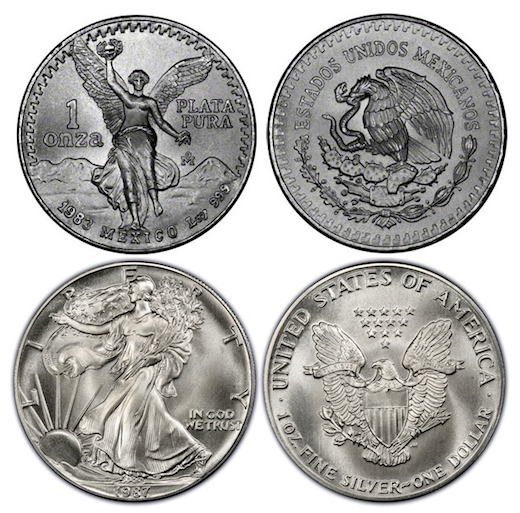
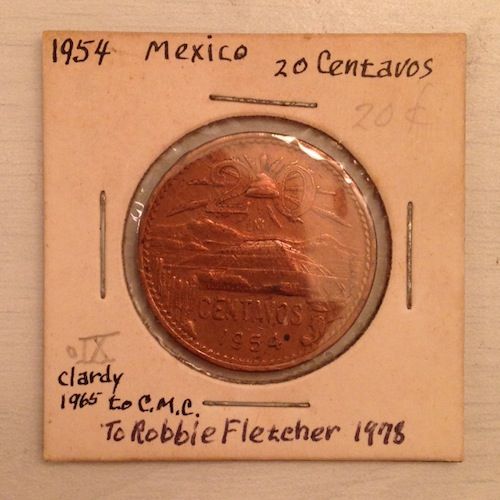
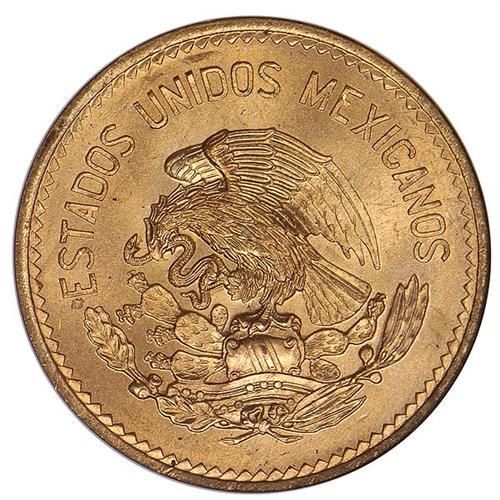
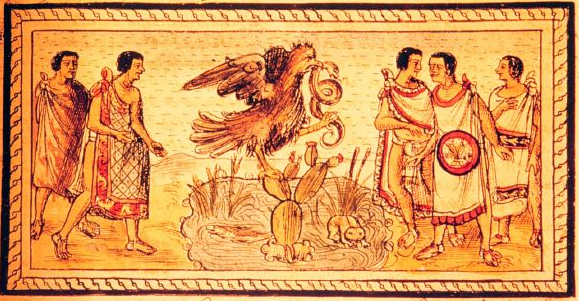
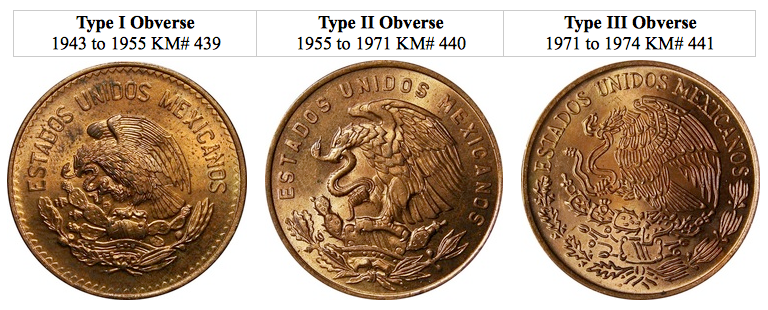
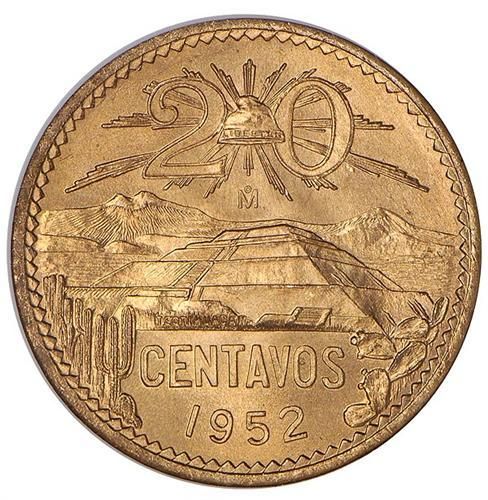
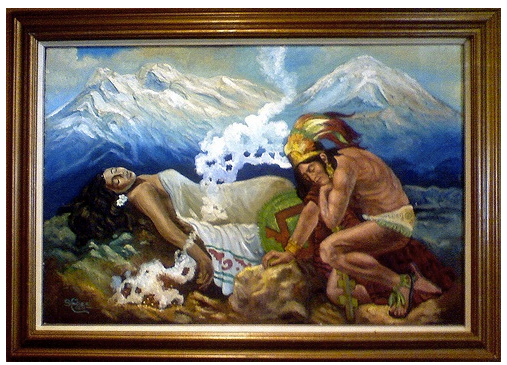



An in-depth look at the 1943-1974 Mexican 20 Centavo
in US, World, and Ancient Coins
Posted
One of the key dates for this series is the 1959 date. And I just found a 1959 NGC MS 68 RD on eBay if anyone is interested. This coin is top pop 1/1. Here: http://www.ebay.com/itm/321797294033?_trksid=p2055359.m1431.l2649&ssPageName=STRK%3AMEBIDX%3AIT
This is not my listing, but thought that anyone interested in the series should check this coin out.